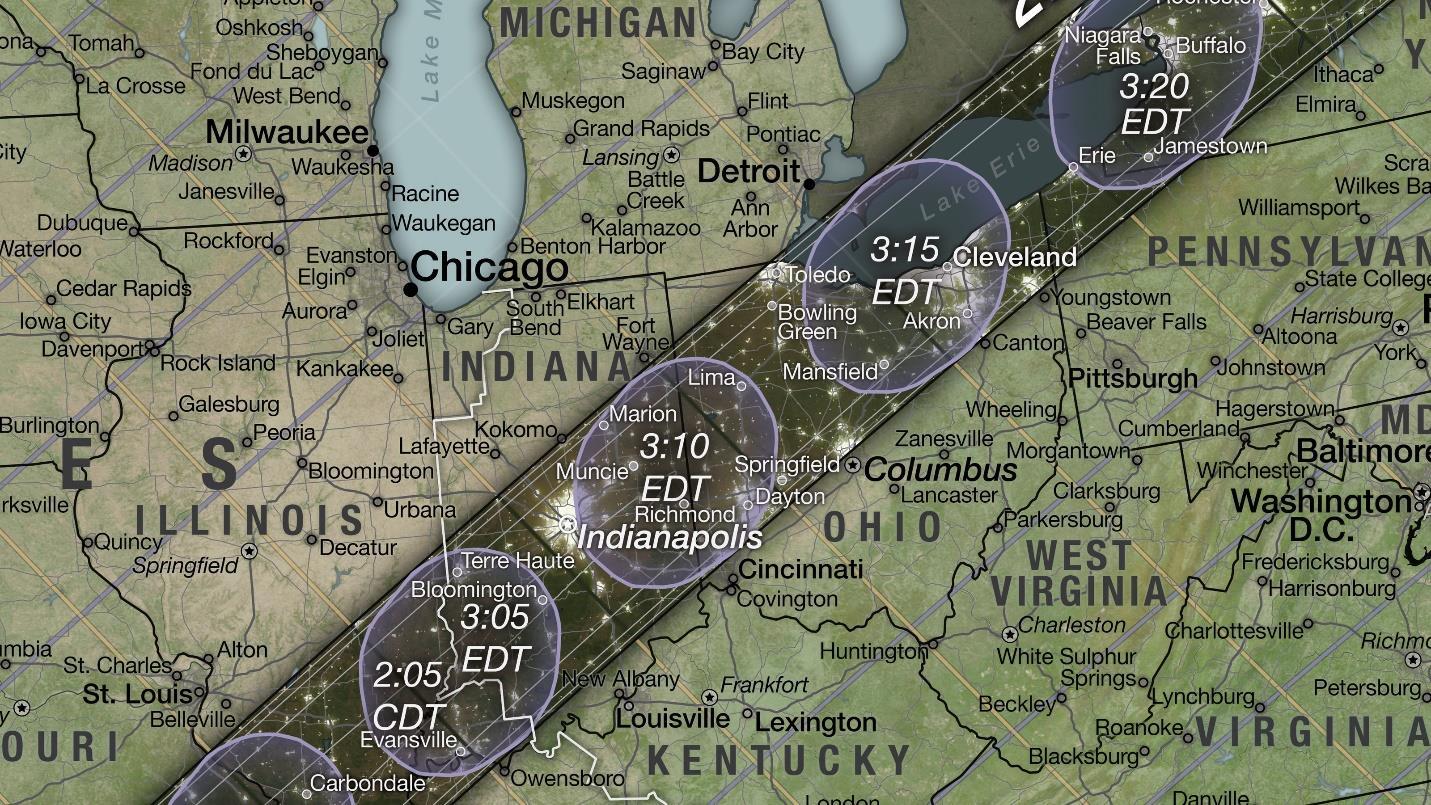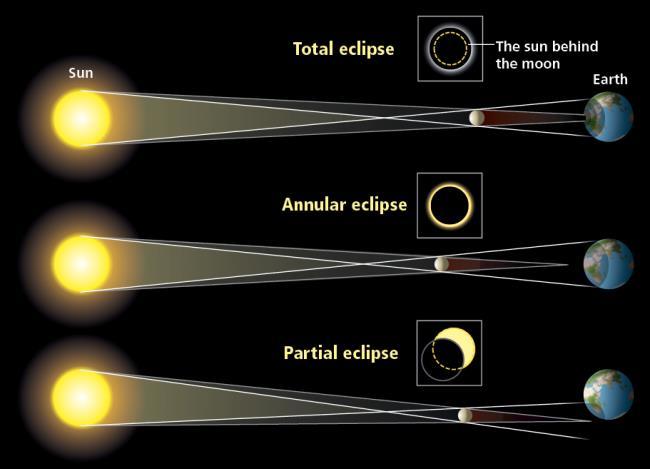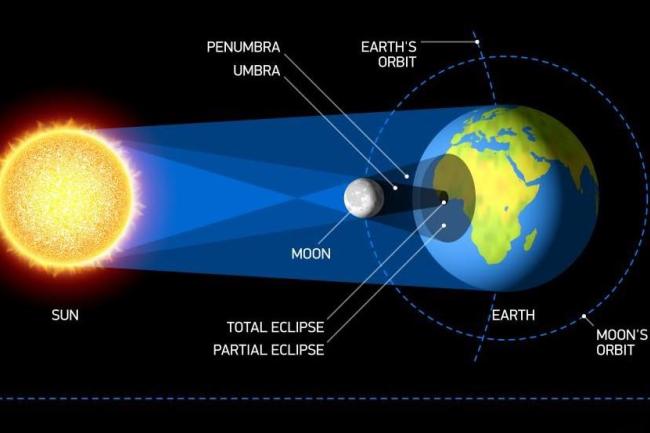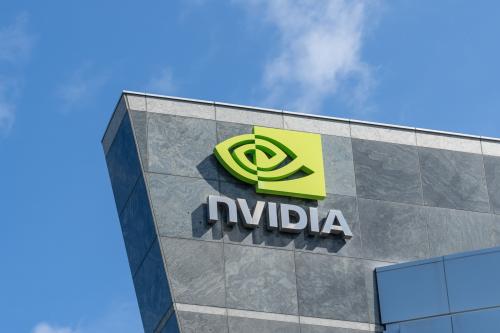To acknowledge this year’s solar eclipse, on Monday, April 8, Howard University’s Biology and Earth, Environment and Equity departments will host a viewing of the near-total solar eclipse from 3 to 4 p.m. in the Greenhouse of the EE Just Hall – Biology Building.
The peak eclipse is projected at 3:20 p.m. Special glasses to safely view the eclipse will be available for the first 50 people.
Dragana Tankosic, Ph.D., a professor in the College of Arts & Sciences’ Department of Astronomy and Physics, provided context about solar eclipses and what we could expect ahead of the total eclipse that will be visible to North America.

Q: What would you define an eclipse as?
A: An eclipse in general is a phenomenon that happens when a celestial body is temporarily obscured, as it gets in the shadow of another body or by having another body pass between it and the observer. Based on that, a solar eclipse is an event when the Moon, the natural satellite of the Earth, gets in between Sun and Earth. In that case the sunlight coming to the Earth is obscured by the Moon getting in between them.
Q: So, what are the types of solar eclipses?
A: We have three different types of solar eclipses: total, annular, and partial eclipses.
A total solar eclipse happens when the moon is in such a position that it completely blocks the sun from our view. For us, it will basically look like the sun and the moon are the same size. That’s why we have that effect of the sun being completely blocked here.
Annular eclipses happen when the moon is at the furthest point away from Earth at the point of the eclipse. In that case, the sun is not completely blocked. We will have that event on October 2 this year. That’s the eclipse we call the Ring of Fire.
A partial eclipse occurs when only part of the sun gets blocked by the moon.

Q: What are the differences between lunar and solar eclipses?
A: Great question. A lunar eclipse occurs when the Earth gets between the Moon and Sun. In that case the Moon will be in the shadow of the Earth.
Q: Where are eclipses in the larger scale and operation of the solar system?
A: The planets and their moons orbit around the sun and all of that is governed by Newton’s Universal Law of Gravity and Kepler’s laws of Planetary motion. Using those laws, we can determine when we will be going to have these solar events.
During a solar eclipse, the sunlight is obscured so we’re not going to have the usual radiation of sunlight coming in on other planets that would affect their ionosphere. The ionosphere is part of the Earth’s atmosphere where charged particles or ions are contained. They’re used in telecommunications to transmit signals.
Q: So, do eclipses occur on other planets in our solar system?
A: Yes, but the first thing we need to look into is if the planets have a natural satellite. If they don’t have the moons orbiting around them, then a solar eclipse can’t happen. For example, Venus and Mercury are two planets in the solar system that do not have moons.
Q: So, we’re not going to see any eclipses related to Venus and Mercury?
A: Now, Mars, as another inner planet, has two moons: Phobos and Deimos. However, those two moons are relatively small and cannot be at the right distance to completely block the sunlight when they would get between Mars and the sun.
Q: Just no total eclipses for Mars then?
A: We only get partial solar eclipses in relation to Mars. We’re not going to have a total solar eclipse, only partial or annular.
Now if we move to the four outer planets – Saturn, Jupiter, Uranus, and Neptune – they don’t have a solid surface. They are gaseous, or what we call them, gas giants that are mostly made of helium and/or hydrogen. They are bigger than the inner planets and they have many moons.
Having many moons orbiting around the outer planets gives us more opportunities for total solar eclipses to happen. However, since they don’t have a solid surface that makes it difficult to observe the eclipse.
Q: Has the Howard University Department of Physics and Astronomy conducted any research on eclipses?
A: I was able to find that one of the graduates from Howard University, Jamie Sims, who is a Meridian, Mississippi native, was working on a GEO ES-16 Satellite. In particular, she was involved in taking images of the eclipse. Other than that, I am not aware of any other research projects related to the Solar eclipse.
About Prof. Dragana Tankosic:
Dragana Tankosic, Ph.D., is a full-time lecturer at Howard University. She is assigned to teach general physics I and II, general astronomy, and observational astronomy. In addition, she became a fixed-term graduate faculty member in the Physics and Astronomy program at Howard University.
As a postdoctoral research associate at the University of Alabama in Huntsville, a NASA postdoctoral research fellow, and a research associate and graduate research assistant at the UAH, Tankosic was an integral part of the Dusty Plasma Group at NASA-MSFC. She was actively involved in highly unique and productive research activities related to fundamental investigations of optical and physical characteristics of lunar dust grains such as laboratory experiments on photoelectric emission from micron-size individual cosmic and lunar dust grains, and laboratory investigation of charging of lunar dust grains by solar wind electrons. Tankosic earned her both her bachelor's and master’s in science from University of Belgrade, Serbia, and a Ph.D. at the University of Alabama in Huntsville (UAH).





